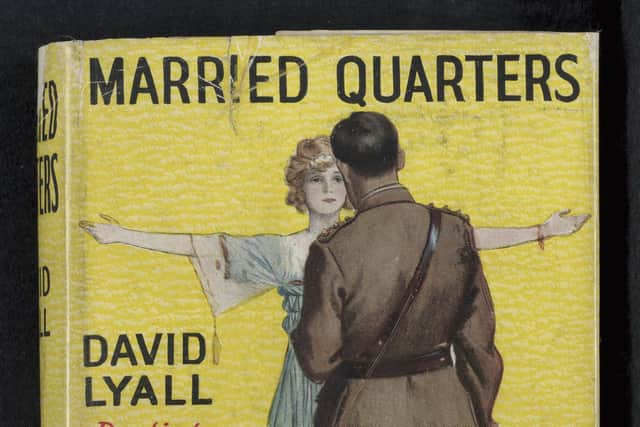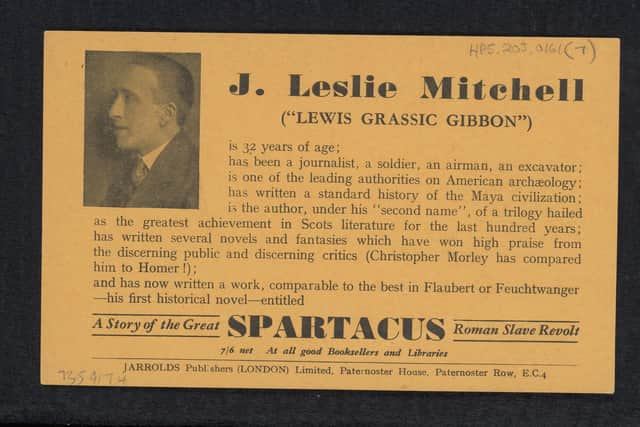Exhibition to chart unfolding story of writers who conceal their real identities


But now the full story is set to be told about the authors who have used aliases and published their work under pen names.
The National Library of Scotland is to lift the lid on the little-known real identities of writers and their personal reasons for keeping them under wraps.
Advertisement
Hide AdAdvertisement
Hide AdIts latest exhibition will explore the many and varied genres of books which have been published under pseudonyms and why modern-day writers are still using them.


Among the writers featured in the exhibition are Lewis Grassic Gibbon, a former journalist from Aberdeenshire who published seven novels under his own name, but used the alias for his trilogy A Scots Quair, starting with Sunset Song in 1932.
The show, which opens on 8 July, will highlight the pulp fiction books of Nat Karta, which were actually written by Glasgow journalist John Watson, a former RAF flight lieutenant in the Second World War who formed his own publishing house.
Also featured is Inverness-born writer Elizabeth MacKintosh who used the pen name Josephine Tey for her crime novels and Gordon Daviot for her plays and historical novels to try to protect her privacy.
The National Library will explore how Alice in Wonderland creator Lewis Carroll was a pen name for the mathematician and academic Charles Lutwidge Dodgson, who kept his own name for work “of a more professional nature”.


The exhibition recalls how the novelist and poet Mary Ann Evans used the pen name George Eliot to conceal her gender, but also to avoid scrutiny of her private life at a time when she was living with a married man who had separated from his wife.
Other writers featured include Doris Lessing, who published two novels under the alias Jane Somers as an experiment to show how hard it was to get published as a new writer, James Murdoch McGregor, the Paisley writer best known for science fiction published under the name JK McIntosh and comic book artist Frank Quitely, the alter ego of Glasgow-born Vincent Deighan.
Advertisement
Hide AdAdvertisement
Hide AdThe exhibition is brought up to date with a profile of Ambrose Parry, the alias created by best-selling author Chris Brookmyre and his wife, Dr Marisa Haetzman, a consultant anaesthetist for more than 20 years.
Kirsty McHugh, co-curator of the exhibition, said: “The stories of why authors use pen names and how and why they chose them are often as compelling as their books.


“Writing something and managing to get it published is something most writers want to shout about from the rooftops.
"They want their name on the cover, ideally as prominently as possible. So when they do choose to use a pen name, it’s often for very specific professional or personal reasons.”
National Librarian Amina Shah said: “This is an opportunity for us to display star items from our prestigious literary archives – manuscripts, letters and notes in the hand of some of the most renowned authors who write under a pen name.
“The exhibition also showcases the breadth of our printed collections, ranging from rare first editions from previous centuries to some of the latest novels published in the UK.”
Comments
Want to join the conversation? Please or to comment on this article.
